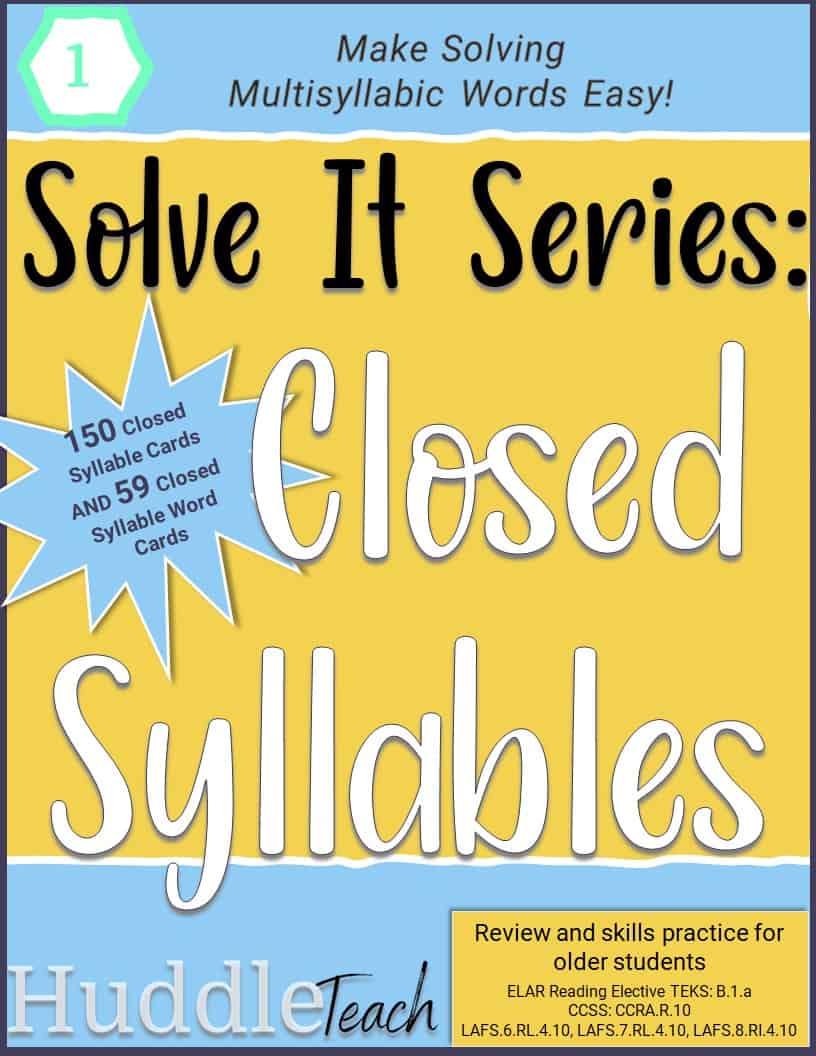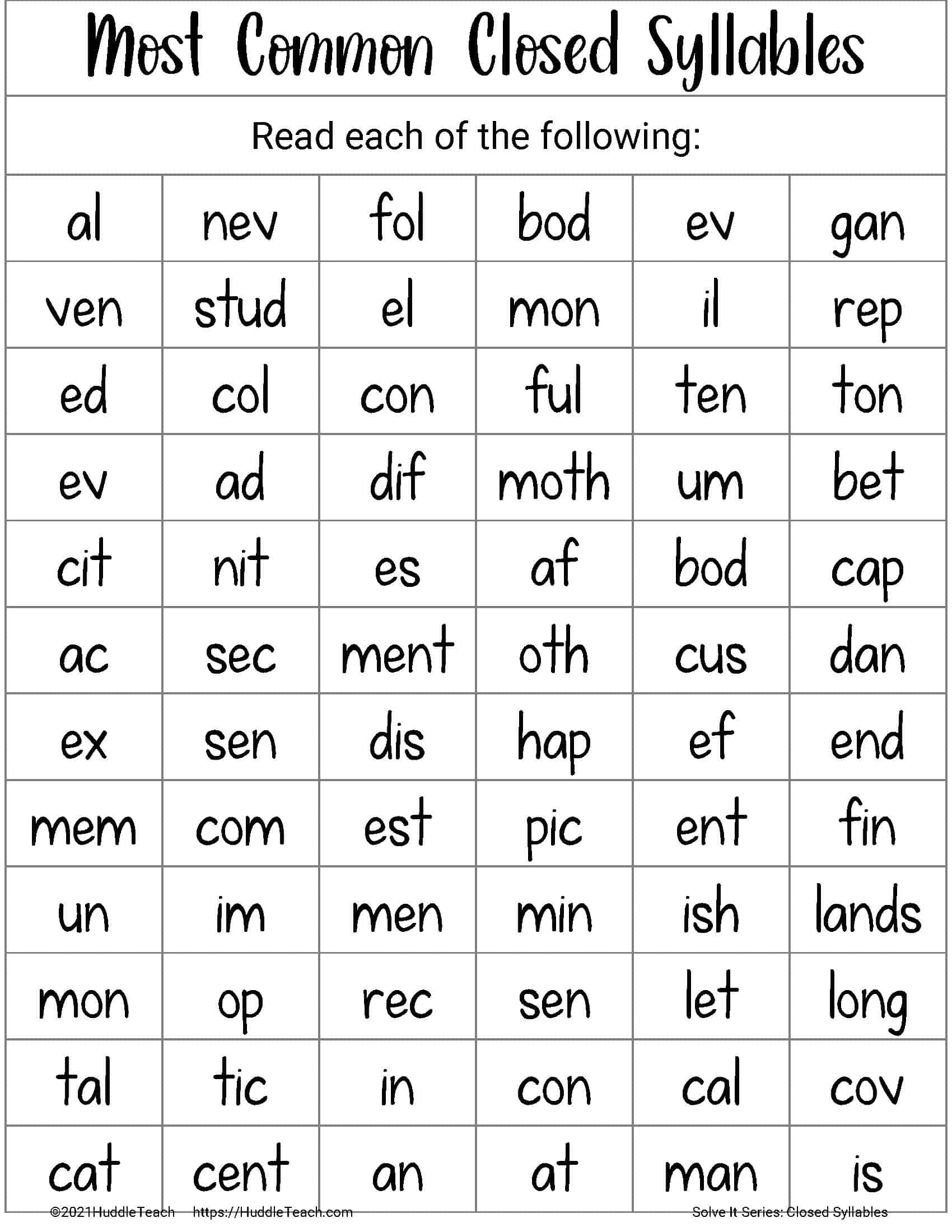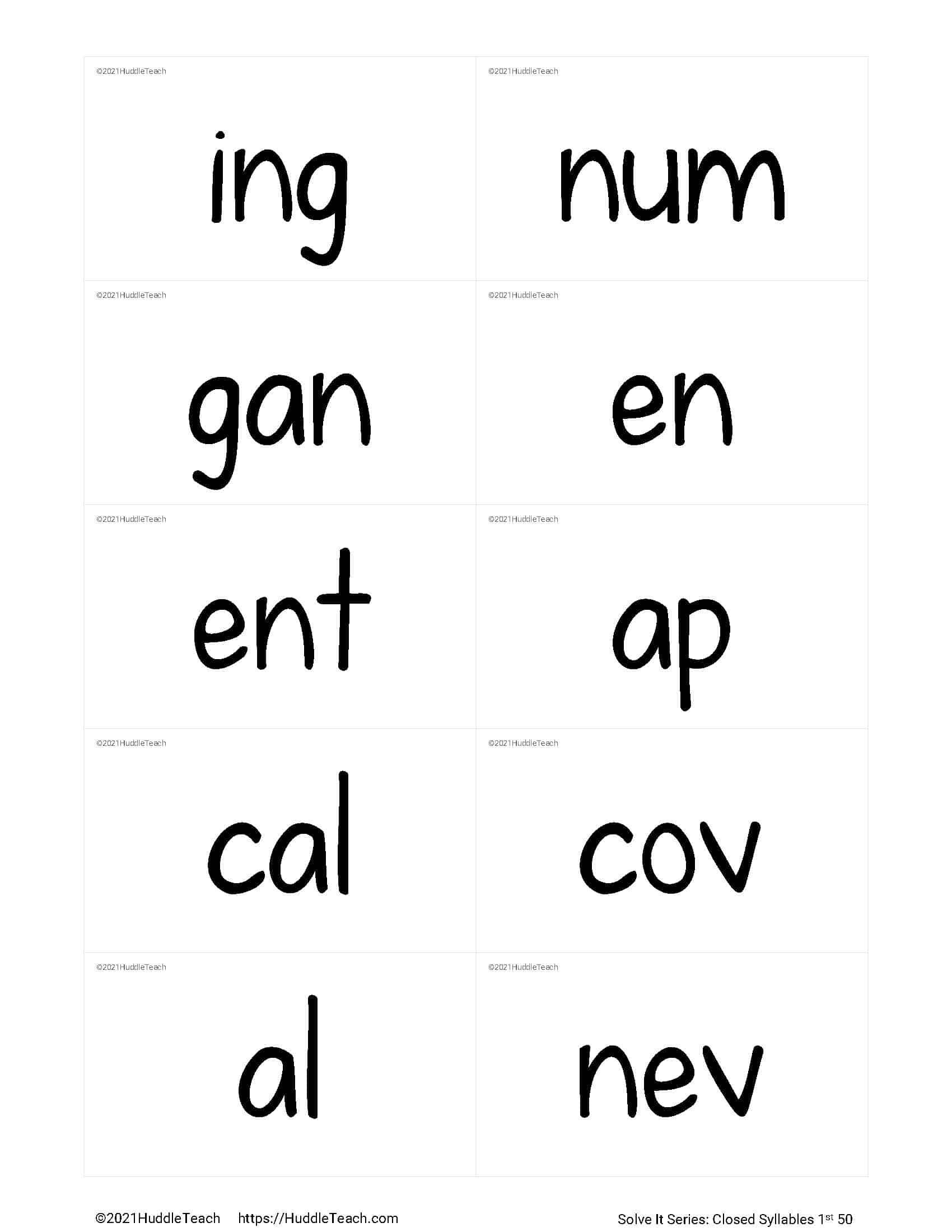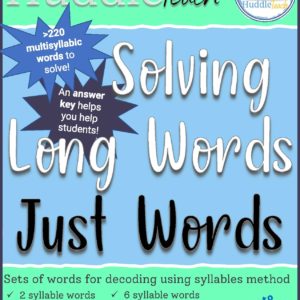Description
Start your older students on the path to decoding longer, multisyllabic words successfully by teaching syllable types. This kit is the first of the Solve It! Series and contains everything you need to teach and practice these syllables, including 150 most common closed syllable cards and 59 closed multisyllabic word cards, all formatted to print on a popular tear-apart labels brand for fast manipulative creation!
Research shows that using the syllable approach helps students decode words, improving their fluency. Of course, once students are reading with more fluency, they are better able to put brain power toward understanding the ideas in the text. Read more about word work with older students here: https://huddleteach.com/working-with-middle-school-struggling-readers/
(Here is just one research article about syllable instruction with the German language!)
In this produce, you will receive:
-
A plan for teaching closed syllables, so don’t feel out of your comfort zone!
-
150 syllable cards, ready to print and separate for fast creation!
-
59 closed multisyllabic word cards, from 2 to 5 syllables long!
-
Closed Syllable mini-posters to quietly remind students of the characteristics of these syllables!
-
Vowel page posters – Closed syllables use short sounds, and students often need a review!
-
Closed Syllable lists, in TWO font sizes – for reading practice or assessment
-
Syllable Reproducible pages – for independent practice or assessment
-
Stuck on a Long Word? page-poster with STEP by STEP instructions for solving longer words!
If you teach middle school striving readers, this is just what you need to get started!
This product addresses standards:
ELAR Reading Elective TEKS: B.1.a
CCSS: CCRA.R.10
LAFS.6.RL.4.10, LAFS.7.RL.4.10, LAFS.8.RI.4.10






